
Hope for a huge, ancient and imperilled fish
First Nations are leading efforts to make sure lake sturgeon can find a home in...
It’s that time of year when caribou, commonly known as reindeer, are everywhere. In addition to the usual ornamentation, which has never lacked in abundance during the holiday season, the advent of inflatable lawn displays has brought a whole new perspective on the creature mythologized as the workhorse of Santa’s sleigh.
There are inflatable reindeer stuffed into the sidecar of Santa’s motorcycle and inflatable reindeer riding in festive trains. Inflatable reindeer wear scarves to pilot Santa’s helicopter and jackets to balance on a teeter totter with jolly ‘ole St. Nick. There’s even an inflatable reindeer — best not to think too deeply about this one — perched on top of an oversized Santa lying belly down on a sled.
If larger-than-life garden displays aren’t your cup of gingerbread tea, at the Capital Iron hardware store in Victoria, B.C., you can buy a plush caribou for $1,700 — only slightly smaller than Canada’s real thing, with antlers like antennae and a shaggy snow-white neck ruff. It’s for sale in a winter wonderland complete with icicles, a starry sky and penguins romping on an ice slide, next to the Christmas lights and across from reindeer placemats, reindeer stockings, reindeer pillows and reindeer door mats.
But amidst all the shopping blitzes, jingle-jingle of sleigh bells and generous glasses of holiday cheer comes a sobering paradox: we have never been surrounded by so many reindeer, yet never have there been so few.
In 1935, when author Farley Mowat first journeyed to the Arctic, his train was stopped for a full hour as a brown river poured across the landscape: “a river of life,” he wrote, “perhaps the most tremendous living spectacle that our continent knows — the almost incredible mass migration of the numberless herds of caribou — the reindeer of the Canadian North.”
In the early 1980s, the George River caribou herd in Labrador and northern Quebec was the largest in the world, with up to one million animals migrating 1,000 kilometres in a dazzling, hoof-clattering mass. On the other side of the country, caribou in B.C.’s Peace region were so plentiful only a few generations ago that First Nations elders remember them as like “bugs on the landscape.”
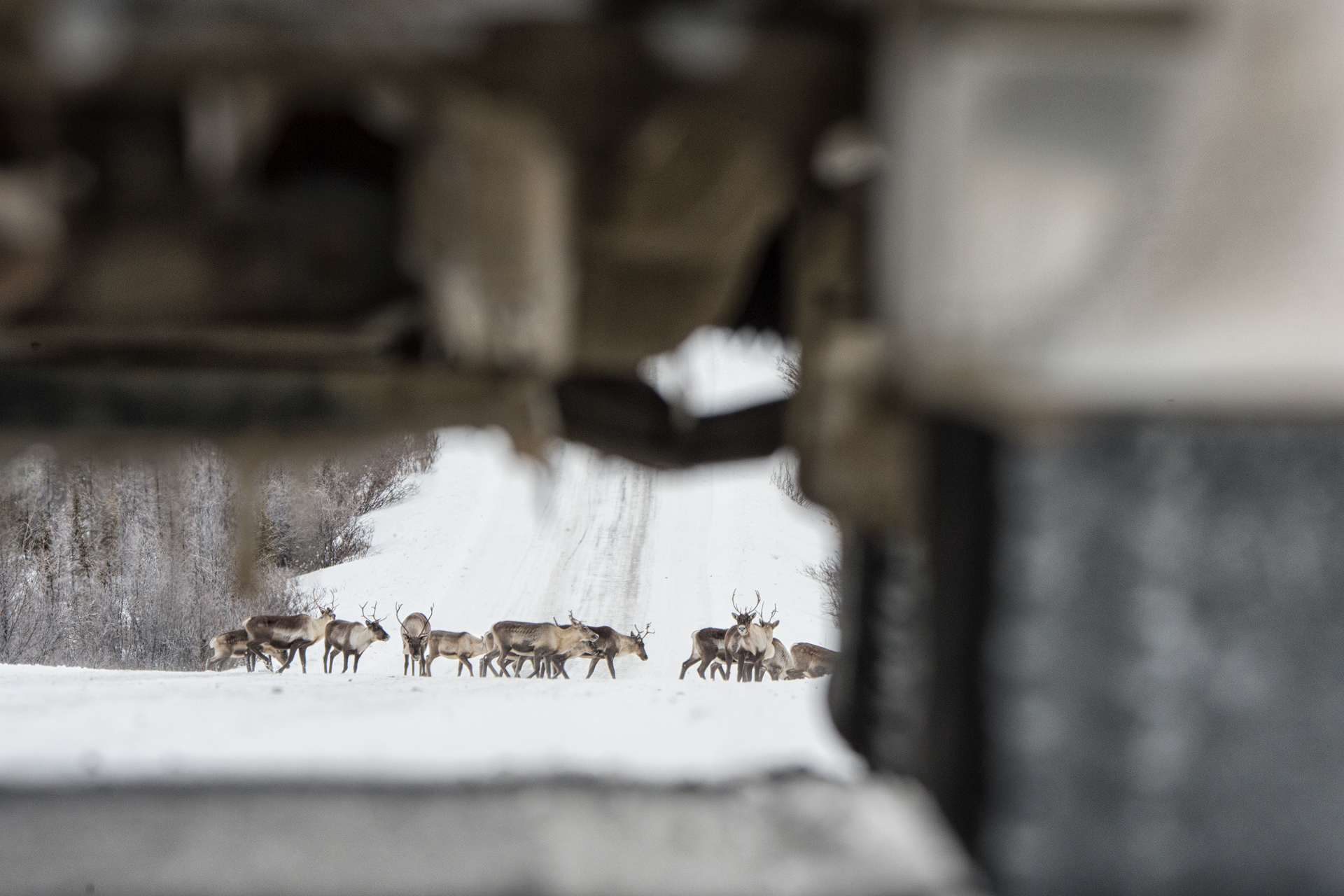
The Porcupine Caribou on the Dempster Highway in northern Yukon. The herd has rarely used its traditional wintering grounds on the east side of the highway, since its completion in the late 1970s. Photo: Peter Mather
But today the ungulate that evolved over millions of years — an animal central to the culture, spirituality and survival of many Indigenous peoples — is in precipitous decline right across the country. As 2019 shone a spotlight on the unfolding global biodiversity crisis, it brought no glad tidings for caribou.
“All caribou in Canada are at risk of extinction,” says Justina Ray, president of the Wildlife Conservation Society Canada, a non-profit group dedicated to scientific research and policy action.
“It doesn’t mean that every population is doing poorly … But if you look across the board through the range of types of caribou — from those that are dwelling in the southern mountains of British Columbia up to the highest mountains of Labrador, all the way up to the high Arctic islands and down to southern Ontario and Quebec — the picture overall is a worrisome one.”
Ray, a biologist who focuses on large mammals in northern landscapes, observed caribou over seven winters while conducting winter aerial surveys in northern Ontario’s boreal forest to track wolverines, whose habitat often overlaps with caribou.
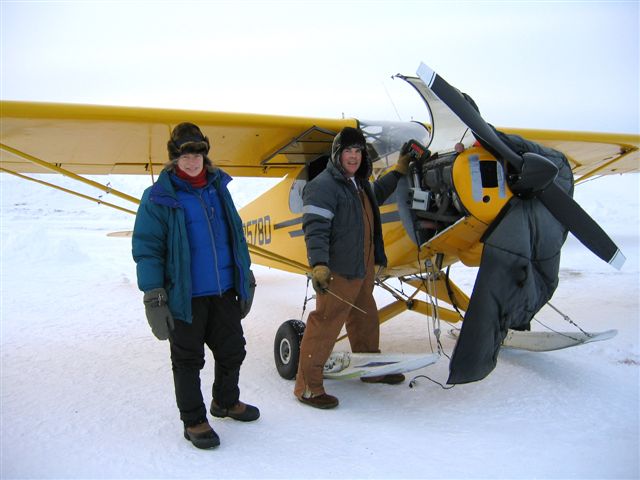
Ray, who has been surveying populations of caribou for years says “all caribou in Canada are at risk of extinction.” Photo: WCS / Flickr
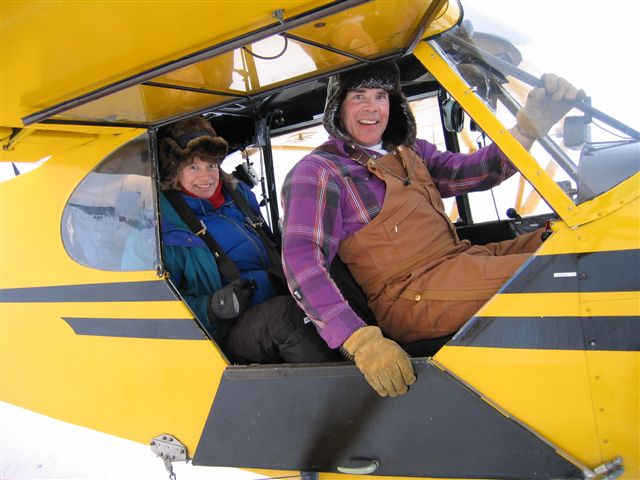
Justina Ray preparing for an aerial survey of Ontario’s boreal forest in 2012. Photo: WCS / Flickr
“You’re flying across expanses of boreal and then you’ll start to see extraordinary signs of [caribou] activity through tracks, and then all of a sudden you’ll look around and they’re hundreds of them where ever you look,” recalls Ray, a senior scientist with the Wildlife Conservation Society and adjunct professor at two Ontario universities.
“I often hear elders say if the caribou disappear then surely the Innu will too.”
Those days, much to the scientist’s abiding concern, are gone. After witnessing large herds multiplying during calving season, with females giving birth before her eyes, today Ray’s caribou math focuses mainly on subtraction and division.
At last count, more than two years ago, only 5,500 animals remained in the once mighty George River caribou herd, which has declined by 99 per cent since 2001.
It’s one of two endangered migratory herds on which seven Indigenous groups in Labrador and northern Quebec have traditionally depended, says Valérie Courtois, director of the Indigenous Leadership Initiative.
“It’s quite alarming to see a herd where in the 70s and 80s people described the mountains as moving, because there were so many caribou on those hills, to now really, really having to look for them,” says Courtois, a professional forester who is a member of the Innu community of Mashteuiatsh on the shore of Peikuakami, or Lac Saint-Jean.
“From an Innu perspective, caribou and its spirit are central to our identify. I often hear elders say if the caribou disappear then surely the Innu will too.”
In British Columbia, a caribou herd with 5,500 animals can only be dreamed of now. Almost 30 of the province’s 52 southern mountain caribou herds are at risk of local extinction, with fewer than 25 animals left in each of a dozen herds.
In the province’s northeast Peace region, two First Nations are raising money for a penning project high on a mountaintop that captures pregnant caribou cows and feeds them until newborn calves are strong enough to stand a chance in the wild.
Last January, two more caribou herds became locally extinct in southeastern B.C. as the provincial government dragged its feet, once again, on meaningful protections. Provincial biologists tranquilized most of the survivors, transporting them by helicopter and truck to a pen near Revelstoke, from which they were later released to join another herd, itself endangered.
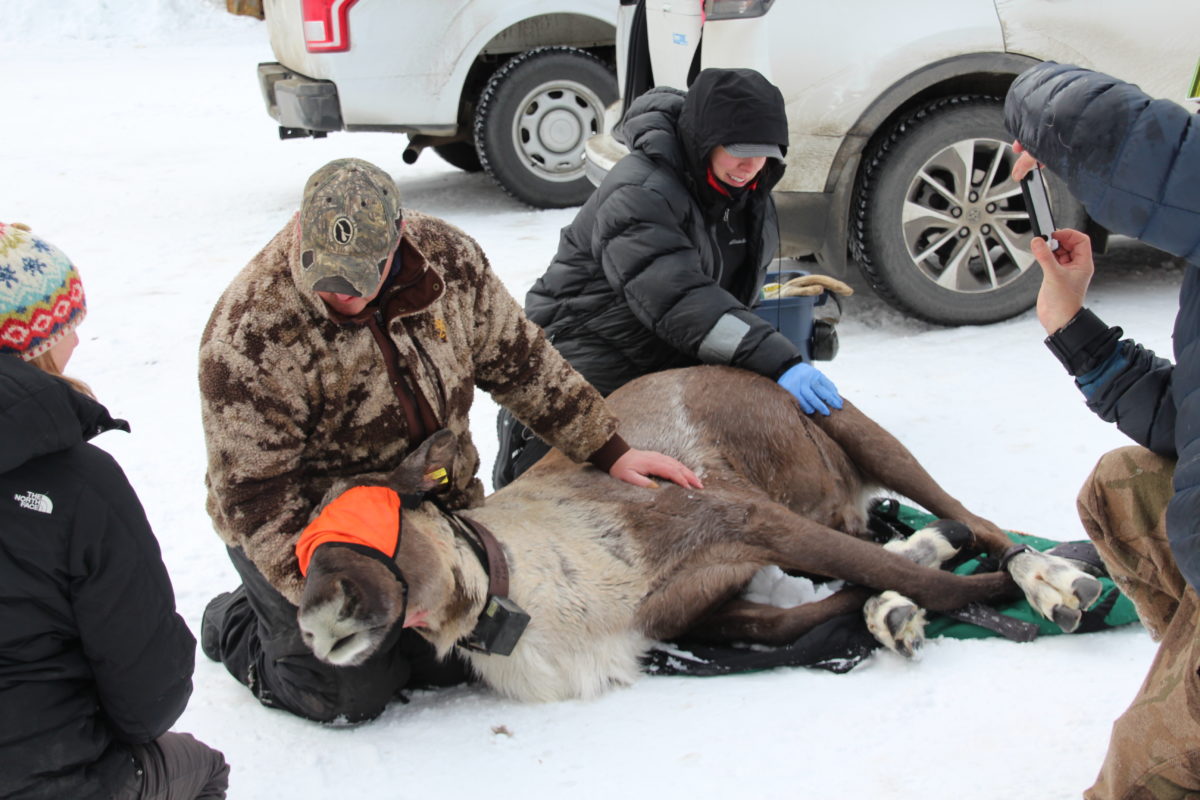
A sedated caribou cow is relocated to the Revelstoke pen. Photo: B.C. Ministry of Forests, Lands and Natural Resource Operations
The extirpation of the South Purcell herd and the transboundary Gray Ghost, or South Selkirk herd — the last caribou herd in the contiguous United States — erases the southernmost boundary of caribou in Canada. It pencils in a new boundary near Nakusp, hundreds of kilometres to the north, where caribou herds are also in considerable danger of winking out.
To the west, the Tsilhqot’in and Ulkatcho nations have just announced an emergency hunting ban on mountain caribou in their traditional territories in the Chilcotin region due to “drastic and devastating population declines.”
“Hunting will cease immediately and until further notice, for all caribou including bulls, cows and calves to protect the few remaining caribou in the Itcha-Ilgachuz, Rainbows and Charlotte Alplands herds,” the nations said in a December 13 announcement that noted all caribou in the Chilcotin could disappear in the next seven years if the downward trend continues.
The Itcha-Ilgachuz herd, by far the largest of the three herds, has declined by 86 per cent and continues to drop in numbers, with only 385 caribou remaining at last count in June, 2019.
“Once again it is our people who have to make the sacrifices because of the government’s mismanagement of wildlife, resources and industry,” says Joe Alphonse, Tribal Chief for the Tsilhqot’in National Government. “They put profit over sustainability and now the caribou are paying the price for that.”
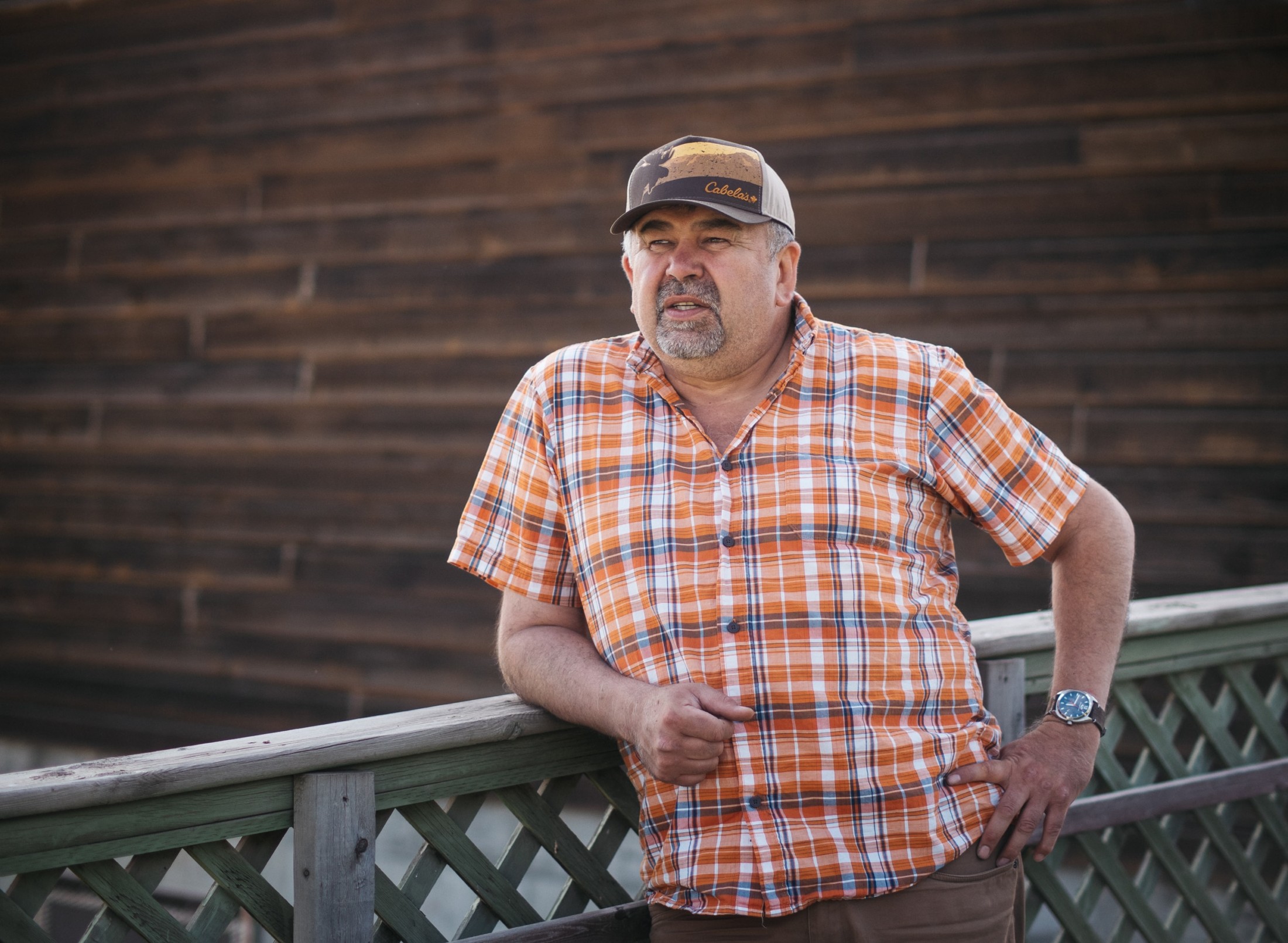
Chief Joe Alphonse of the Tl’etinqox Nation stands outside the band office in Anaham, B.C. Photo: Louis Bockner / The Narwhal
More often than not, the grim reaper for Canada’s caribou is the loss of habitat from industrial development such as forestry, mining and oil and gas extraction.
Networks of roads and other disturbances increase stress levels and decrease breeding while creating easy access for wolves and other predators within fractured landscapes that give caribou, a species that evolved to spread out, no room to escape.
Caribou also rely on disappearing old-growth forests for nutrient-rich lichen — frequently their sole winter food — that grows only on mature trees.
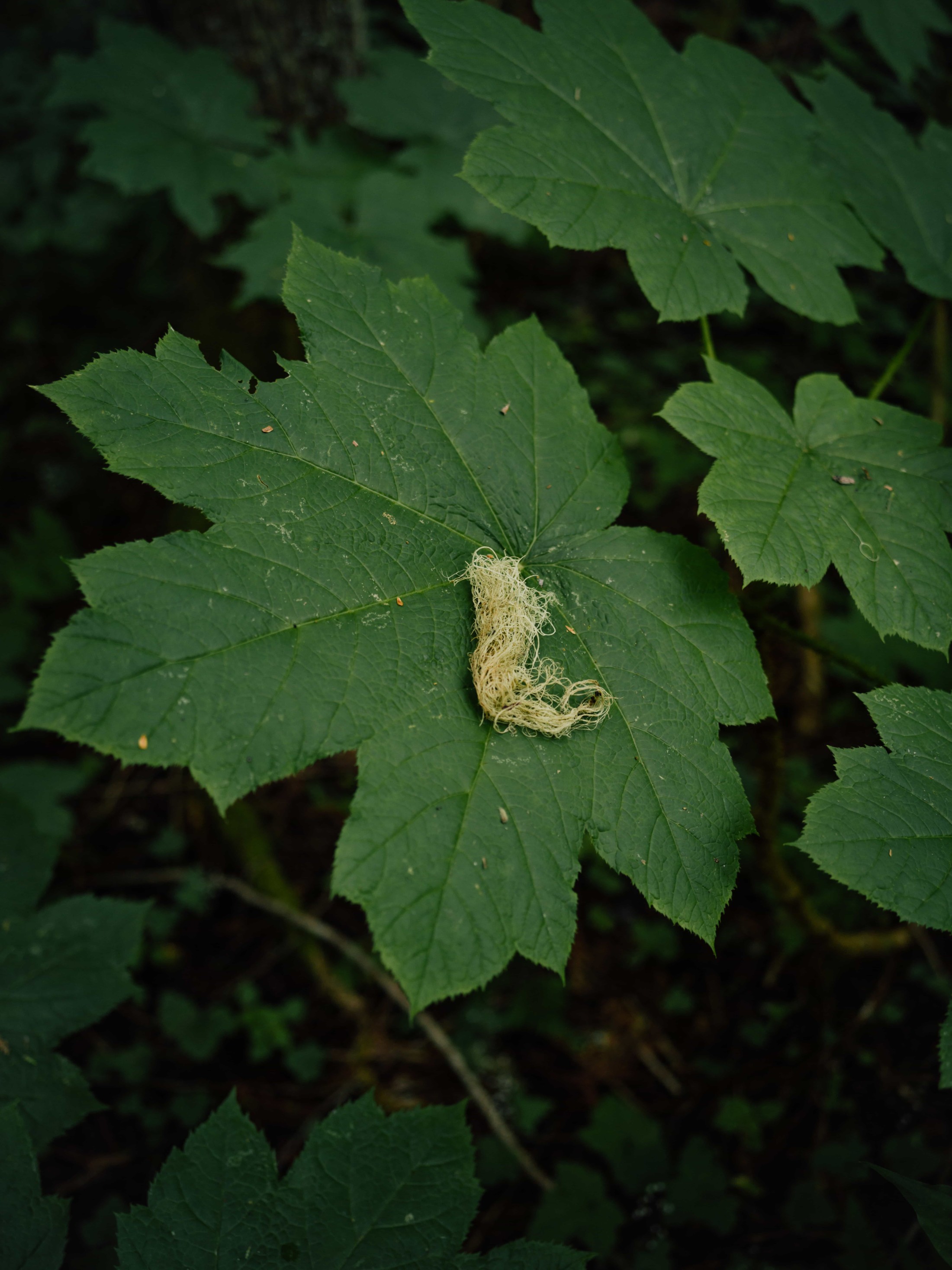
Lichen, which only grows on old trees, feeds mountain caribou in the winter. Photo: Taylor Roades / The Narwhal
In just one example, B.C.’s new 650-kilometre Coastal Gas Link pipeline will destroy and fracture habitat for three caribou herds at risk of local extinction. They include the Hart Ranges herd, in whose critical habitat the B.C. government also recently issued 78 new permits for industrial logging, covering a total area almost three times the size of the city of Victoria.
While sanctioning the continued destruction of caribou habitat, the B.C. government proposes to shoot more than 80 per cent of the wolf population in the habitat of three at-risk herds this winter, including the Hart Ranges herd.
But wolf culls and penning projects are only short-term, band-aid steps that will have no impact on the persistence of caribou herds unless sufficient habitat is protected, Ray and other scientists say.
“All this intensive management is not going to be good for caribou in the long-term,” Ray observes. “You have to bring back habitat and protect it.”
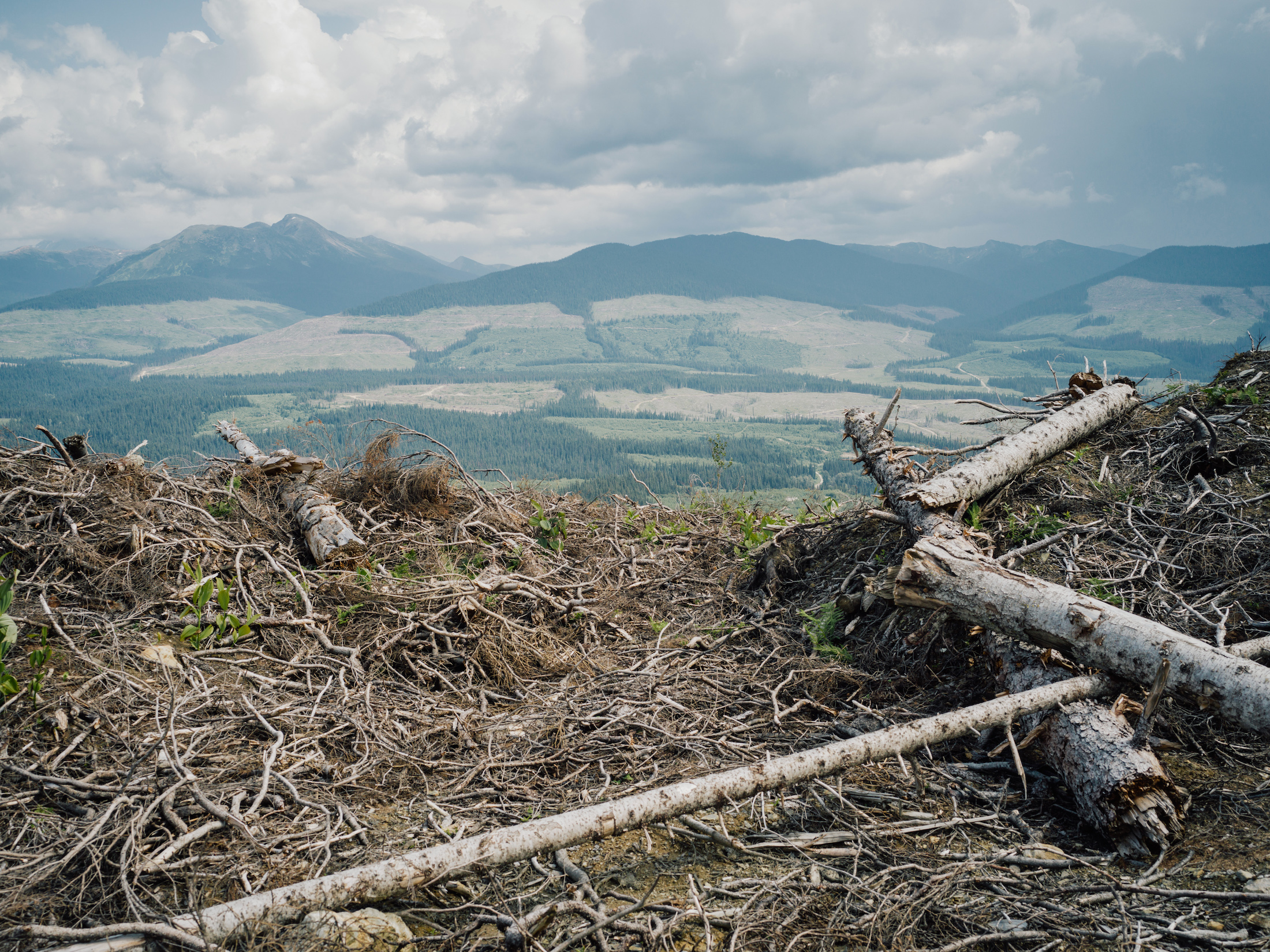
A view of the endangered Hart Ranges herd’s critical habitat in the Anzac valley north of Prince George. The B.C. forests ministry recently issued 78 new logging cut block permits in the herd’s critical habitat, including six cut blocks in the Anzac valley. Photo: Taylor Roades / The Narwhal
The George River herd population has always fluctuated and, in the 1930s and 1940s, it was also very low, Courtois notes. But the difference, she says, is that Labrador had virtually no industrial development at the time, allowing the population to naturally rebound.
“Now we have the largest iron mine in the world in western Labrador which has a system of railroads associated with it. We’ve got the largest nickel mine in the world in Voisey’s Bay, which is very near the grounds where they’re wintering. We’ve got heavy mineral exploration because, of course, where you find the largest nickel mine and the largest iron mine in the world it breeds other interests.”
It’s not uncommon to have more than 1,000 active mining exploration camps in the region, Courtois says, ranging from “two guys with a hammer” to camps with airstrips and drill pads.
“All of these activities generate noise and dust and caribou avoid those things as much as possible.”
Military activities in Labrador, such as low-level flying and a bombing range, are also thought to have contributed to caribou declines.
And last August, Labrador’s controversial new Muskrat Falls hydro dam flooded more than 100 square kilometres of the lower Churchill Valley, destroying habitat for three caribou populations that include the George River herd and the critically endangered Red Wine Mountain caribou herd.
“Labrador and the northern parts of Quebec are amongst the most rugged environments to survive in,” Courtois says. “And, certainly, my people would not be here if it wasn’t for caribou.”
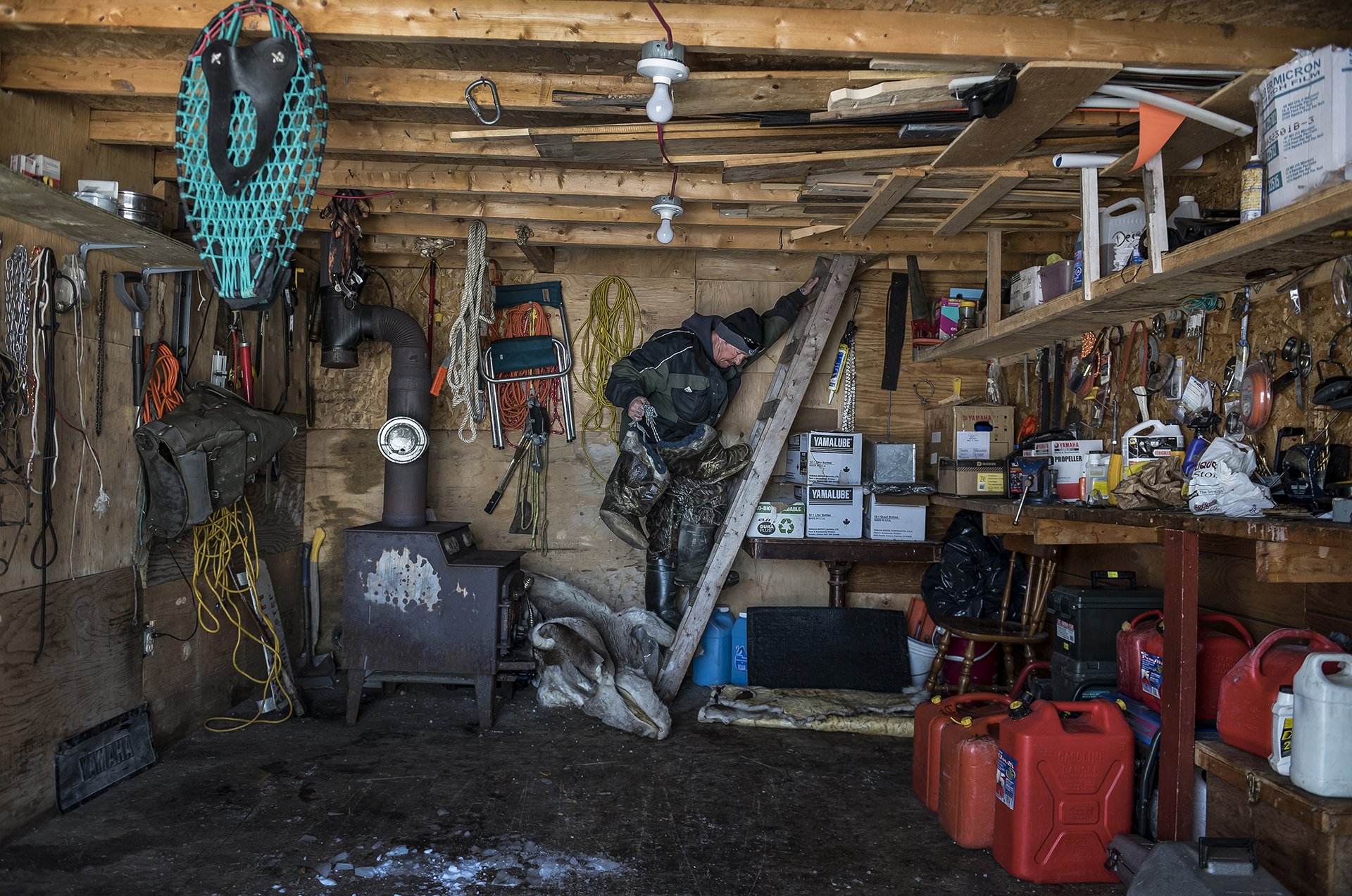
Derrick Pottle, an experienced Inuk trapper and hunter whose diet is 95 per cent sourced locally, carries sealskin boots and a caribou jacket from the loft of his shed while preparing for a hunting trip in Rigolet, Labrador. Pottle’s diet of wild game, salmon, berries, trout and seal would have been similar to his ancestors living in Hamilton Inlet roughly 8,000 years ago. The traditional way of life among Labrador’s Inuit has been under siege for several generations. “There are many things that dictate our lives that we don’t have control over … Our whole way of life of is changing. Everything we did used to be connected back to the spirit world. A lot of those old habits are gone now,” Pottle said. Photo: Darren Calabrese
“That relationship with caribou is fundamental to our very identity. It certainly is something that we consume, and use in everything from our clothing to our tools to some of our habitations on the land. But the most important aspect of it [is that] it’s central to how we understand what our place in the world is. In the Innu concept of the world, that relationship and the responsibilities that come with the relationship with caribou — reciprocity, care, respect — are manifestations of our cultural relationship with the land.”
Climate change, too, is having an impact on caribou populations across the country. A proliferation of pestering bugs at lower elevations keeps caribou away from their fall breeding grounds in Labrador — a place the Innu call the Caribou House — for weeks after they would normally arrive, Courtois observes.
Melting and freezing snow packs also create ice crusts that prevent caribou from pawing for lichens with their snowshoe-like hooves. “You have weather events that have caused high mortality in certain cases,” Ray says. “There’s also dynamics that we don’t quite understand that are in play. The quality of winters is certainly causing some extra stress on animals.”
According to Anna Baggio, director of conservation planning for Wildlands League, Ontario’s caribou populations are “hammered,” with only about 50 per cent of their original ranges still intact.
“The habitat disturbance is just going up and up and up,” Baggio says. “When you can start to count the caribou, because there are so few, that’s not a good thing. It means they’re probably going to wink out.”
Even though Ontario has had an Endangered Species Act for the past decade — unlike B.C., where the NDP government has backtracked on a campaign promise to introduce endangered species legislation — “we still don’t have any protection of caribou,” Baggio notes.
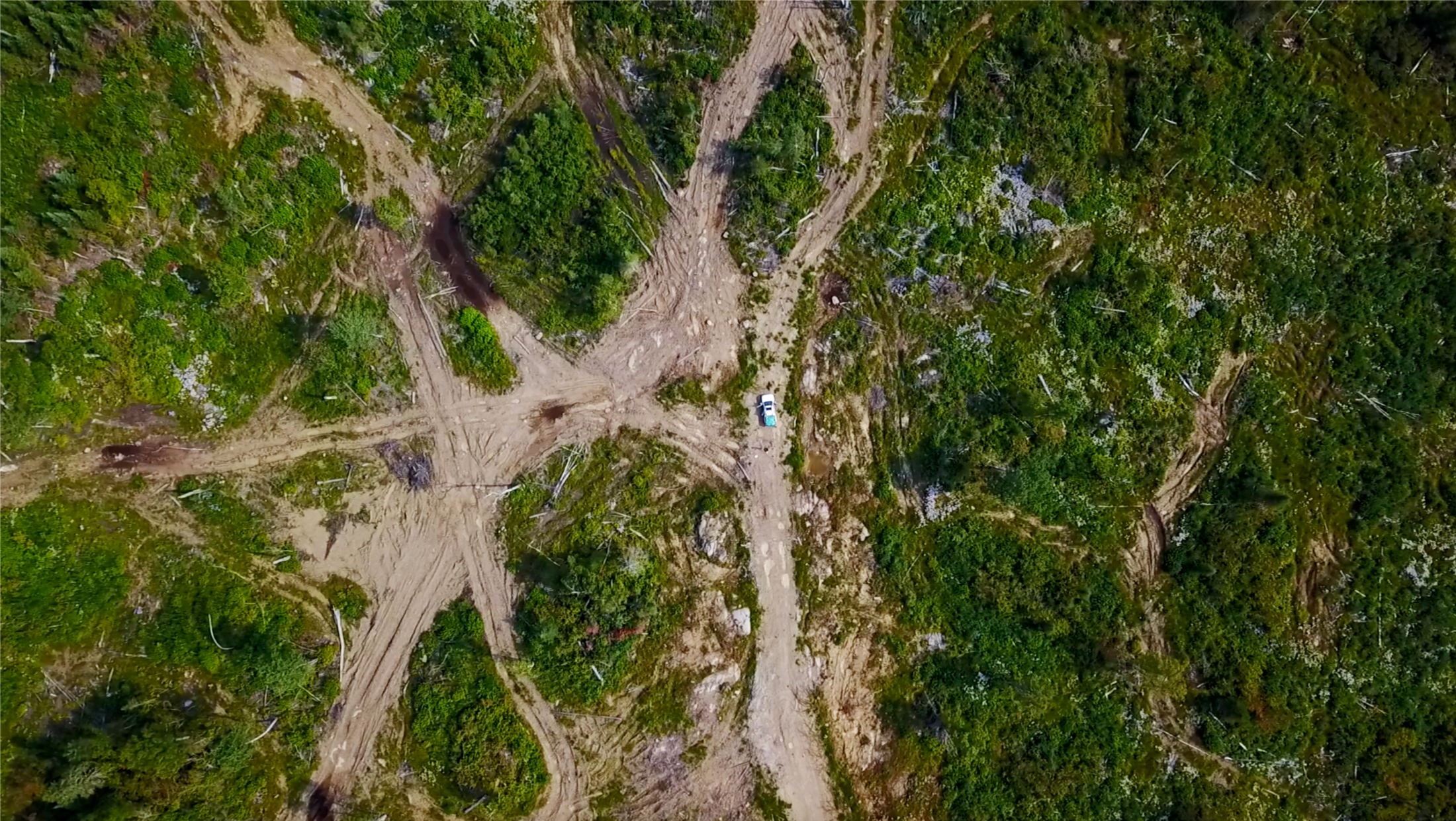
Decades of forestry in northern Ontario have led to a network of roads, pull outs, pits and staging areas that have dramatically inhibited the health of the boreal forest. Photo: Trevor Hesselink
So what can be done, other than to put on our reindeer antler holiday hats and hope for the best in the age of the Sixth Mass Extinction?
“This is one area we don’t need more science on,” says Ray, who co-chaired the terrestrial mammals subcommittee of the Committee on the Status of Endangered Wildlife in Canada from 2009 to 2017.
“We just need to act.”
Boreal caribou, Ray points out, were listed as threatened under Canada’s Species at Risk Act in 2004. It took eight years and litigation to get the federal government to come up with a recovery strategy, as required under law. But the long-awaited federal strategy only pushed responsibility over to the provinces.
Unwilling to upset the federation applecart, Ottawa is “very differential to the provinces,” Ray notes.
For instance, the federal government has put forward what Ray calls “a very good blueprint” for boreal caribou recovery but hasn’t enforced it anywhere in critical habitat.
“At this point, I think provinces are relaxing because they know they don’t have to do it.”
In May 2018, as B.C.’s southern mountain caribou herds teetered on the brink of local extinction, former federal Environment Minister Catherine McKenna declared that the caribou faced “imminent threats” to their recovery and said immediate intervention was required.
If Ottawa is not satisfied that B.C. has a suitable action plan to protect endangered herds, the federal Cabinet can approve an emergency order under the federal Species at Risk Act. That would allow Ottawa to make decisions that are normally within the jurisdiction of the B.C. government, including whether or not to grant logging permits.
Almost a year later, B.C. released two draft caribou agreements, a comprehensive agreement for the Peace region’s six highly-endangered herds and a far weaker agreement, lacking any habitat protections, for the province’s other imperilled caribou populations, including for the Itcha-Ilgachuz, Rainbows and Charlotte Alplands herds.
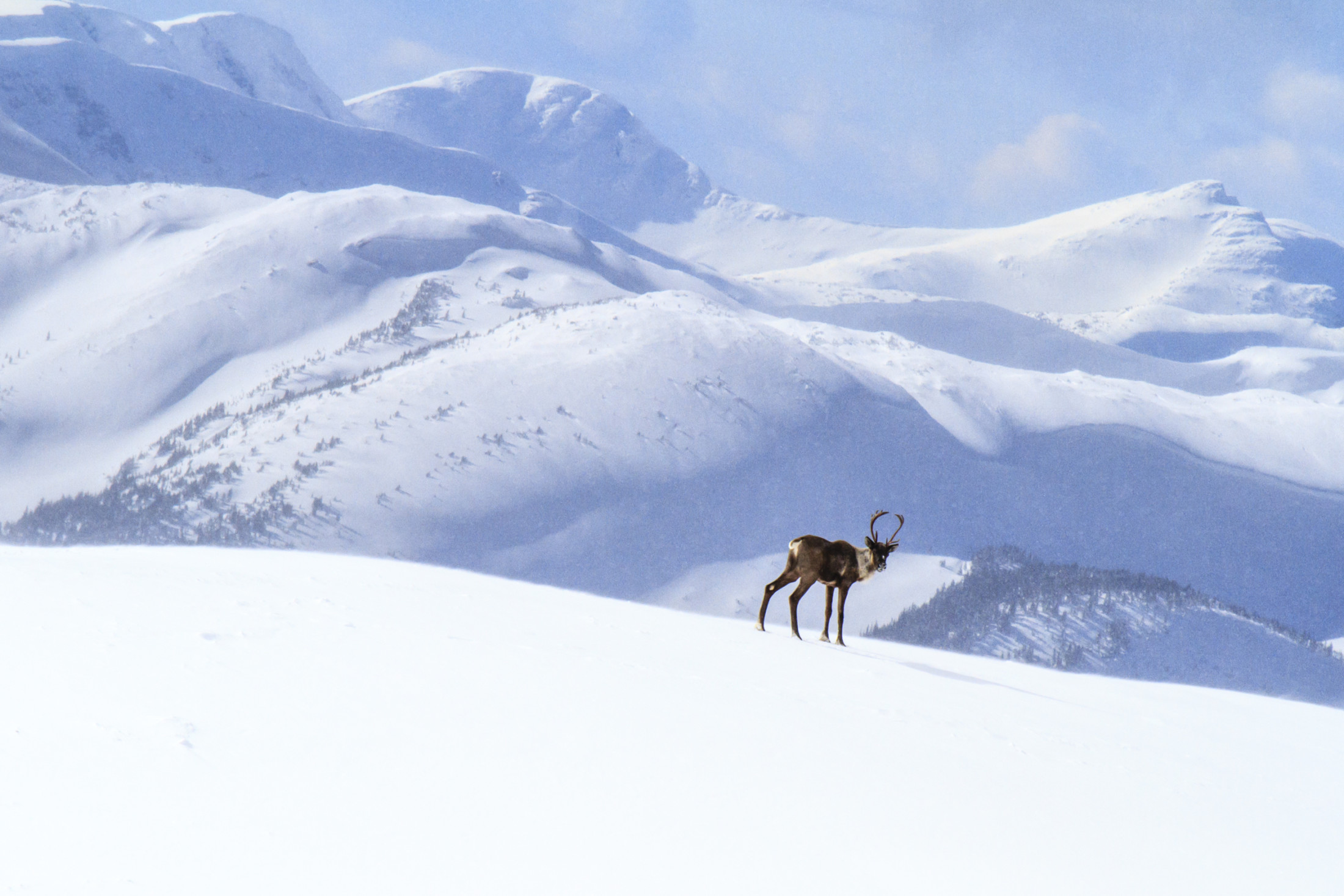
Mountain caribou above the treeline in winter, Hart Ranges, B.C. Photo: David Moskowitz
In the Peace, an interim logging moratorium now prevents new cutting permits from being issued in critical habitat, yet clear-cutting continues because the provincial government issued almost four dozen logging permits before the moratorium took effect.
But one-and-a-half years after McKenna’s declaration, B.C. has still not unveiled final caribou recovery plans, renewing calls for immediate federal intervention.
“They’ve given B.C. more than enough space and B.C. hasn’t done anything useful with that space,” says Ecojustice lawyer Sean Nixon.
“It’s just another version of talk and log. They’ve been ‘working on it’ since the 1990s and … it hasn’t done anything to help caribou.”
On December 17, Nixon, on behalf of five conservation groups, wrote a 10-page letter to newly appointed federal Environment Minister Jonathan Wilkinson, calling the condition of B.C.’s southern mountain caribou dire and “worsening by the day.”
“If the federal government wants to prevent the extinction of southern mountain caribou and provide for the species’ recovery, we see little alternative other than for the federal government to step in to do what the province has been unwilling — or unable — to do,” said the letter, which set deadlines for federal government action.
“If we don’t hear something meaningful from the federal government before those deadlines, the groups we’re working with will definitely be looking at litigation,” Nixon cautions.
Baggio says a federal order to protect caribou in one or two of Ontario’s boreal caribou ranges would send a strong signal that Ottawa has both the desire and the gumption to protect caribou instead of silently observing their demise.
“It’s been way too long that the provinces have dragged their feet on this.”
An order could be devised in a way that wouldn’t put people out of work in industries such as logging, Baggio says, noting jobs would also be created through habitat restoration initiatives.
“We don’t have any interest in shutting down industries. We care about people. We’re here to see our society function, just in a different and better way that makes room for nature.”
The decline of caribou has significant impacts for Indigenous groups in northern Quebec and Labrador, where food prices are among the highest in the country. A voluntary caribou hunting ban, instituted in 2014 due to plummeting herd numbers, has eroded food security for the collective population of 60,000 in the seven Indigenous groups, including for Labrador’s Innu, Courtois says.
“You love what you eat and you protect what you love.”
Hunting, she says, encourages a precautionary and conservation-based approach to a relationship with animals.
“You love what you eat and you protect what you love.”
To reverse declining herd numbers, Courtois says governments need to relinquish decision-making power for caribou to Indigenous peoples.
“We’ve found that Crown governments are often in conflict in terms of their decision-making with caribou, having to balance both economic interests as well as caribou interests. And, unfortunately, caribou often don’t have a voice whereas mining companies certainly do, and other industry.”
Leaving Crown governments to make decisions about caribou means “we see very little success” from caribou management approaches, Courtois observes.
“We think that an Indigenous-led approach, because of the fundamental nature of those relationships with caribou, hopefully would lead to a much more comprehensive and careful approach to management.”
Ray says the first step to saving Canada’s reindeer is for governments to acknowledge that ‘business as usual’ will only push caribou closer to extinction.
“I think the big act would be actually acknowledging that our pattern of primacy of natural resource extraction in caribou country is going to have to change if caribou are going to be on the landscape,” she says.
“Right now, they’re still saying we can do everything.”
Get the inside scoop on The Narwhal’s environment and climate reporting by signing up for our free newsletter. Angello Johnson’s shoulders burn, and his arms...
Continue reading
First Nations are leading efforts to make sure lake sturgeon can find a home in...

We’re excited to share that an investigation by The Narwhal is a finalist for the...

A new documentary, Nechako: It Will Be a Big River Again, dives into how two...
